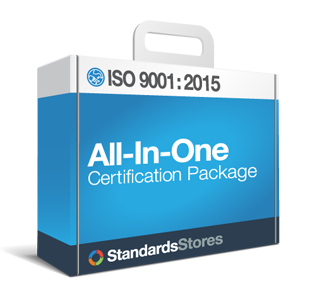How long does ISO 9001 take?
Becoming certified to ISO 9001:2015 depends on many factors. The biggest thing your organization is preparing for is the registration audit. Certification involves many different components includes building your QMS, documenting that system, and implementing it throughout your organization. Many organizations are curious how long these tasks will take, and this depends on several factors:
- If your organization already has a Quality Management System and how much it aligns with ISO 9001.
- How Complex your QMS scope is.
- The number of locations your organization has
- Internal Resources-How much time personnel devote to working on the Quality Management System development each week
- What tools or assistance you are able to use, including remote and virtual tools
- Registrar Availability
As you are planning your implementation these factors are the most important to consider and will determine how long it takes for your organization to achieve certification.
We have prepared several timetables for you to use as an example or as a plan for your project. Feel free to download and use these MS Word documents:
Your Current Quality Management System:
To help understand where your organization is at with implementing ISO 9001, you can measure your Quality Management System against the ISO 9001 standard with a Gap Analysis. A Gap Analysis is an audit you perform to see what parts of the ISO 9001 Standard you already are complying with and where your shortcomings are. It is useful information for planning a timeline for your project.
Complexity of your QMS Scope
The more complex your Quality Management System scope is will also determine the time it takes to implement ISO 9001. As ISO 9001 was designed to be implemented for organizations of all types and sizes, there is a chance not all parts of the standard are applicable to your organization and therefore can be excluded (provided you have a valid justification). If this is the case, it can reduce time. Another factor is the amount of documentation. The larger and more complex your organization is the more paperwork you will have. When you are implementing ISO 9001, carefully deciding on the scope will greatly save time now and in the future.
Number of Locations
The number of locations your organization has is also a big factor when it comes to time. The more locations the more time it will take. You can decide what locations to include in your scope, but don’t exclude something because it is easy, you need to carefully evaluate the integrity of the management system.
Internal Resources
Another factor is internal resources. This includes how much time your personnel can dedicate to certain tasks and projects surrounding the QMS. If you can determine what internal resources you have for implementing ISO 9001 into your company, this will give you a better idea of the time frame. To get your employees more familiar with ISO 9001, employee training may be beneficial to you.
Tools and Assistance
Look for tools or assistance to help make your project efficient and effective. A professionally designed and documented ISO 9001 Quality Management System will save you a tremendous amount of time spent designing your system by trial and error and documenting the system. By using a professional system, you will have a system of procedures that are designed to give you a running head start at a well-designed, time tested Quality Management System. Our system has been used in thousands of companies from a variety of industries, all over the globe. Another resource is hiring a consultant. If you have the budget to do so, this can be beneficial to your organization.
Registrar Availability
When you are planning on becoming ISO 9001 certified, the Registrar, otherwise known as Certification Body requires 3 months of documentation that the QMS has been running sufficiently. Further, you want to book an appointment to ensure you have a date saved.


